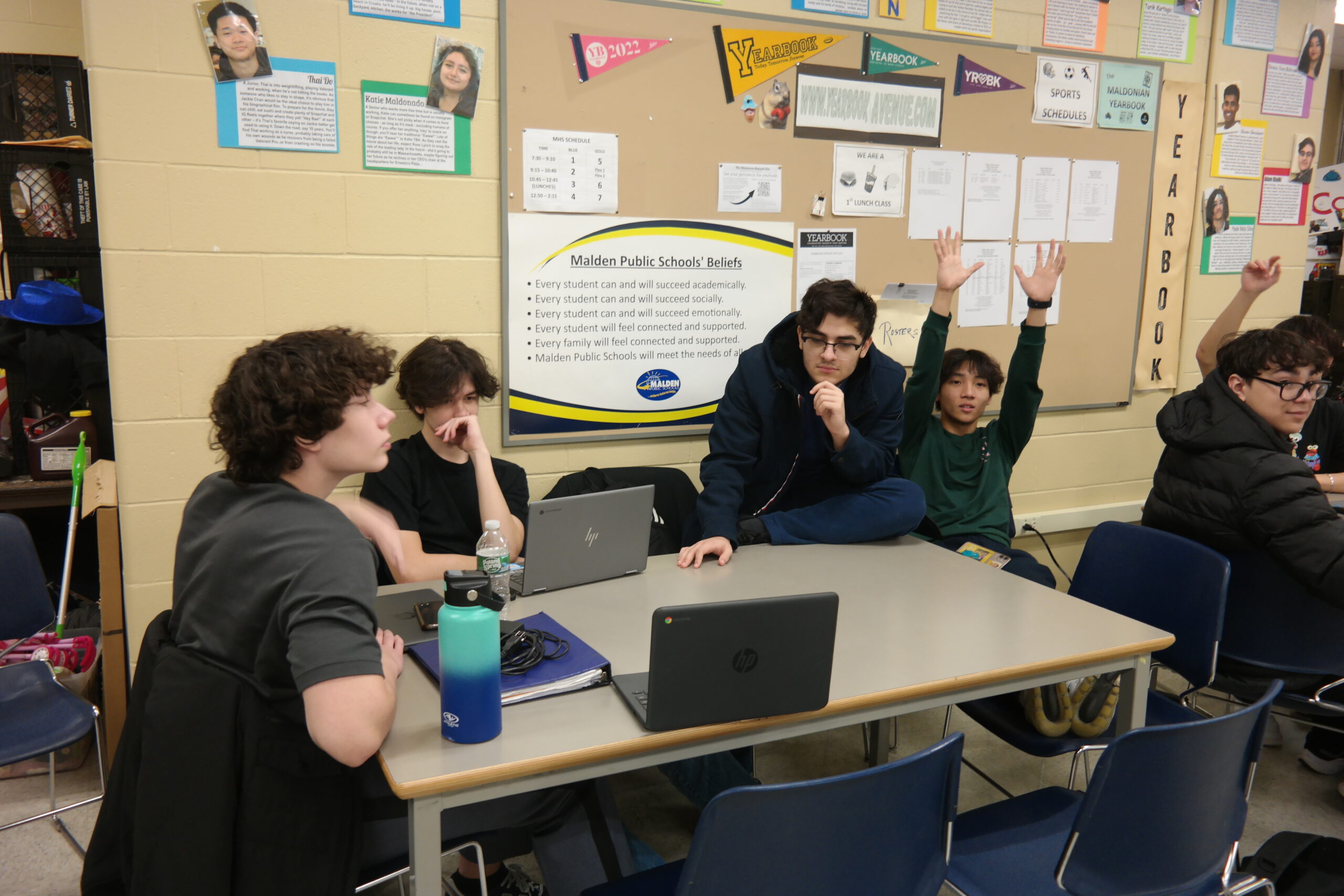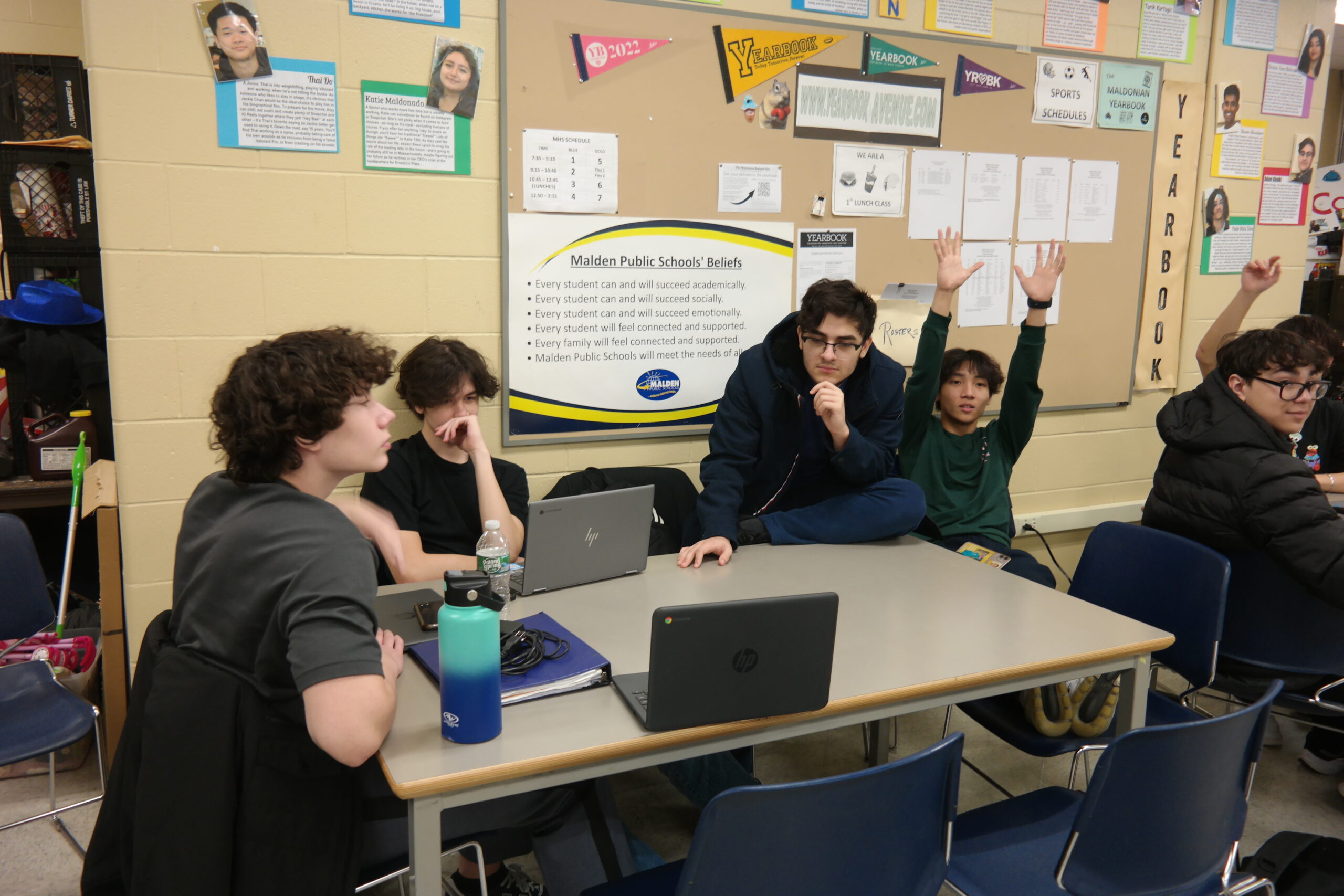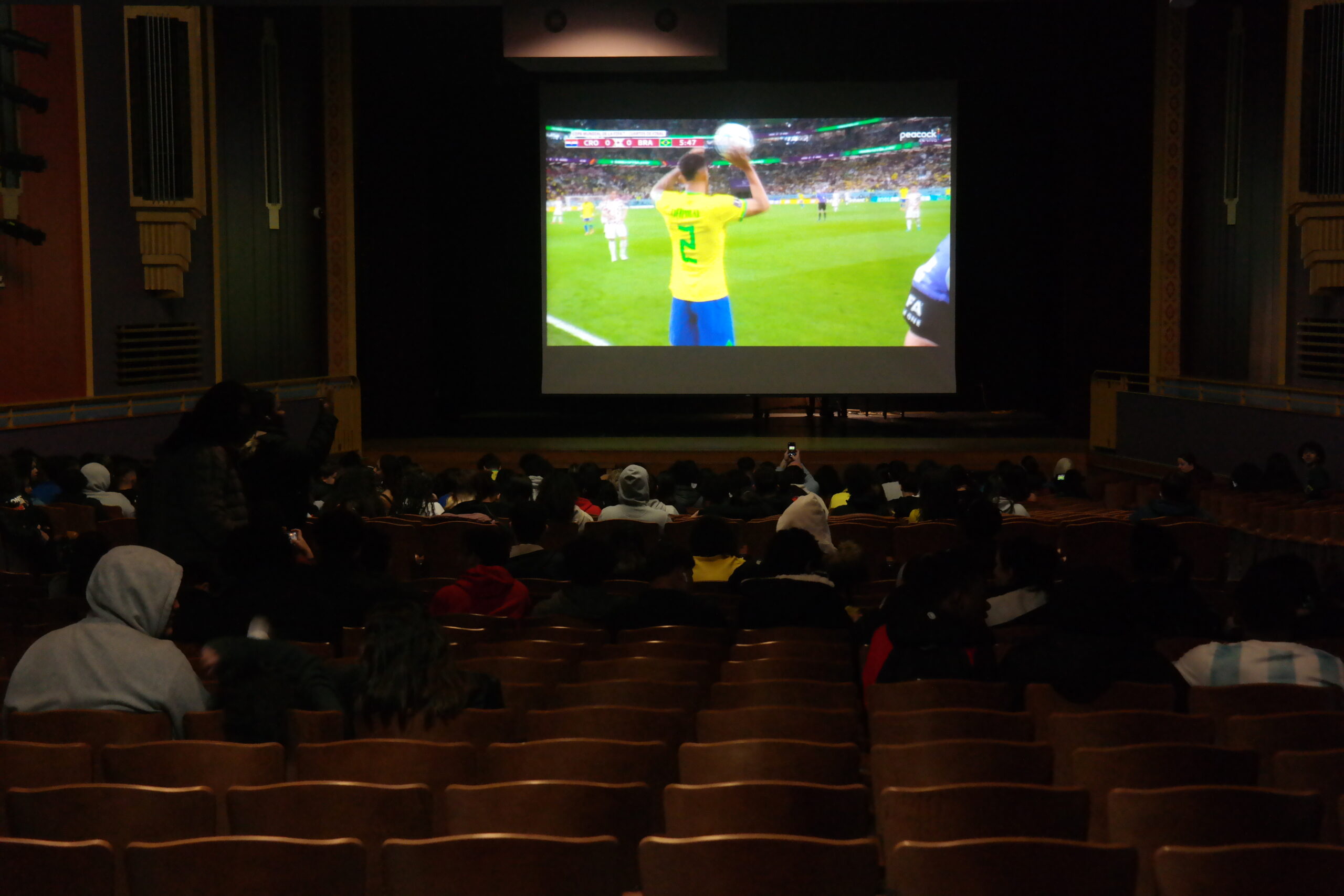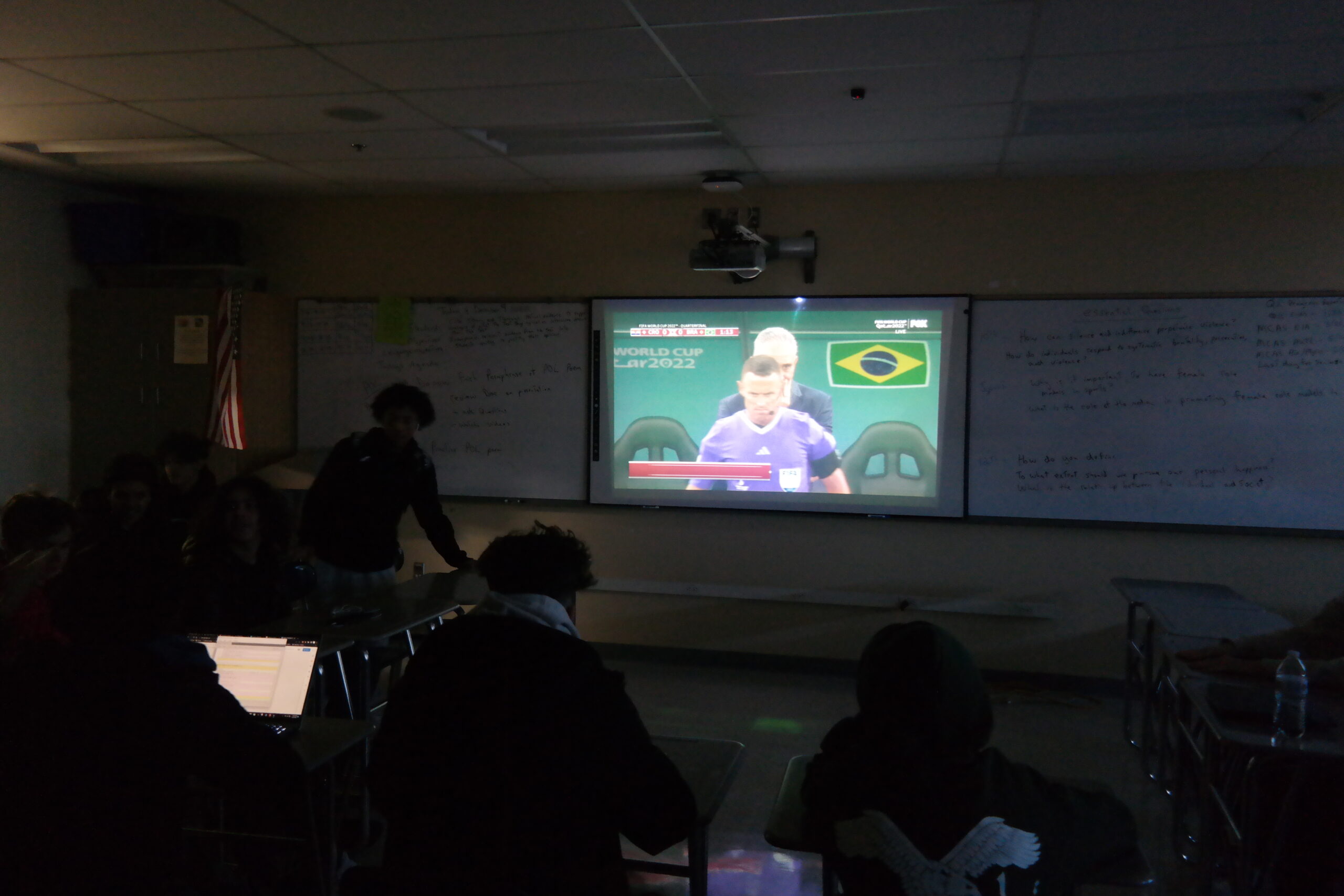
SAMSUNG CSC

The green of a pitch emanated from Chromebooks galore. Within every class, you could hear shouts of joy, cries of misery, and chant after chant. The FIFA World Cup departed from the high school almost as fast as it had come, but the impact was certainly passionate during its month of runtime. Students came in with colorful football jerseys, scarves with messages were seen everywhere, and the atmosphere was often festive. Throughout the course of the tournament, the matches and the fanfare have had varying effects on the student body and the school as a whole, ranging from positive to distracting.
The opinion of most students was that the Cup was a positive experience. Christian Taipe, a senior, said that the cup was a “rare occurrence” (due to taking place in November/December), and that it was “important to try and watch as many games as possible.” This is corroborated by another senior, Eric Tang, who said that he was “happy for Argentina” after seeing the final and that the Cup made him “enjoy football once again.” Doubtless, there are many more examples like these two throughout the school.
The Cup could be seen in almost every room, every nook, every cranny, and, in intense periods, even in the auditorium. The times of matches were set in advance and were known to all: at the beginning, there were matches at 5:00, 8:00, 11:00 in the morning, and 2:00 PM, meaning that for the majority of every school day, you could find a World Cup match to watch. Melissa Sullivan, an art teacher, was able to broadcast matches live in her class, due to the nature of the art class. “Luckily in art, we can multitask, and [we can] get into the rhythm of producing artwork while kind of listening or kind of periodically watching something.” There was a varied interest throughout Sullivan’s classes, but there was a level of interest in every class, and it was often indulged. If this can be used as an example, it is quite fair to say that the Cup generated a large amount of interest.


The Cup was so large that it inspired an entire Joy block dedicated to it. Jeremiah Smith, the coach of the boys soccer team at MHS, ran a Joy block dedicated to soccer appreciation and jumped at the chance to cover the Cup, saying that he hosted the block, “because of the unique situation that it was occurring during the school day and the amount of excitement throughout the school.” He also cited the ability of this block to keep the soccer team together in the offseason.
However, the Cup also brought some problems. Due to the location of the World Cup in Qatar, the timing of matches was entirely incompatible with our time zone. The consistent appearance of matches throughout the school day posed a struggle, as students were split between the choice of doing their schoolwork and watching games, a choice in which many students decided to ignore their work and focus on the game.
Sullivan noted this phenomenon in her classes. “I think it distracted students from working because they really needed to watch.” This was also noted by Taipe, saying that although he mainly focused on school, he “tried to find time to watch as many games as possible…[it] kind of affected my performance in school.” Smith also corroborated this, saying that it was “difficult to keep students on task.” He recognized that he could not stop people from watching it completely. “This is a once-in-a-lifetime situation as the tournament is usually run in the summer.” Although some students may have had problems striking a balance, others were able to enjoy the Cup without any major problems.
The ending of the Cup is the ending of a big fluke in international football. It is likely that we may never see another World Cup hosted during the school year for the rest of our lifetimes, if not ever. Especially in a school such as Malden High School, with its representation of many countries and peoples, it is quite hard to find a team in the Cup that wasn’t represented at MHS. It was truly an experience to remember.




